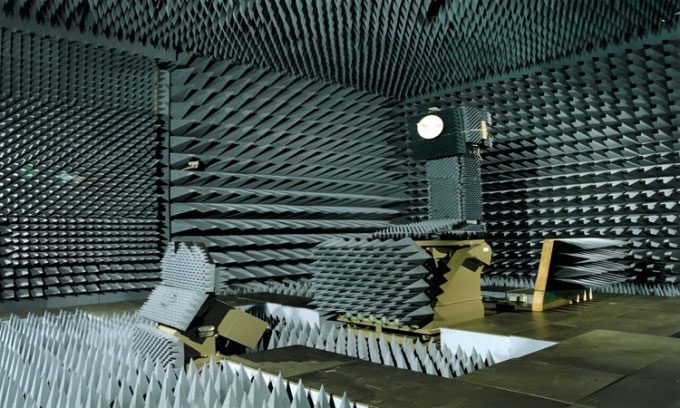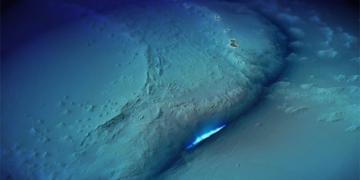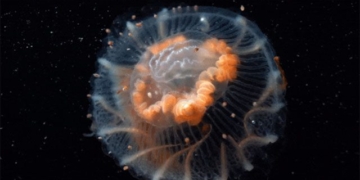The Goddard Electromagnetic Anechoic Chamber (GEMAC) enables NASA to test the quality of antennas on satellites and spacecraft, ensuring that missions can transmit data back to Earth.
On any given day, NASA’s network may need to communicate with over 100 missions in space. Whether it’s maintaining contact with astronauts in orbit or observing deep space, dozens of satellites and spacecraft share a common requirement: they need antennas. Without antennas to communicate with Earth, NASA’s missions would be impossible, according to Phys.org. Ensuring that antennas can withstand the challenges of spaceflight requires rigorous testing on the ground in simulated space environments. The Goddard Electromagnetic Anechoic Chamber (GEMAC) at NASA’s Goddard Space Flight Center in Greenbelt, Maryland, has been instrumental in antenna testing for over 50 years.

Cobalt blue conical structures used to absorb sound waves in the GEMAC chamber. (Photo: NASA).
Rows of cobalt blue conical structures line the walls and floor of the Goddard antenna chamber, reminiscent of soundproof rooms in recording studios. While this room shares similarities in some respects, its purpose is to block radio signals and eliminate radio wave reflections inside the chamber.
Just as preparing songs for an album requires eliminating surrounding noise that microphones pick up, the same applies to radio waves when engineers want to test a spacecraft’s antenna. The radio environment on Earth is very “noisy.” AM and FM broadcasts, television signals, mobile phones, and even microwaves all generate radio frequencies (RF). To simulate the relatively quiet RF environment of space, engineers need a way to isolate the antenna from all other radio waves on Earth during testing.
This is the role of the densely packed rows of conical columns on the floor and walls of the chamber. Made from polyurethane foam, these columns serve as microwave-absorbing equipment. They block outside noise and interference signals. Inside the chamber’s “quiet zone,” they provide a non-reflective environment that the antenna would experience in space.
With the RF-dead environment, engineers at Goddard can accurately assess how well the antenna transmits and receives signals. If the antenna’s transmission signal does not point in the expected direction during flight, mission data could be lost, or the entire spacecraft could be jeopardized if a critical directive is missed.
Without the GEMAC, the antenna design and testing process would be akin to an accountant losing access to their computer, according to engineer Ken Hersey at Goddard. As the number of NASA missions and their accompanying antennas has increased over time, engineers at Goddard have had to upgrade the GEMAC to meet the demands. Hersey was the lead designer during the most recent significant renovation in 1997, which helped expand the frequency range that antennas could accommodate during tests. The chamber also assists in calibrating scientific equipment like radar and microwave radiation sensors.
Most recently, the GEMAC certified both the antennas for the Roman Space Telescope and the PACE (Plankton, Aerosol, Cloud, ocean Ecosystem) mission. After these missions launch, their groundbreaking observations will lead to discoveries related to dark matter and dark energy (ROMAN), as well as insights into air quality, ocean health, and climate change on Earth (PACE).


















































